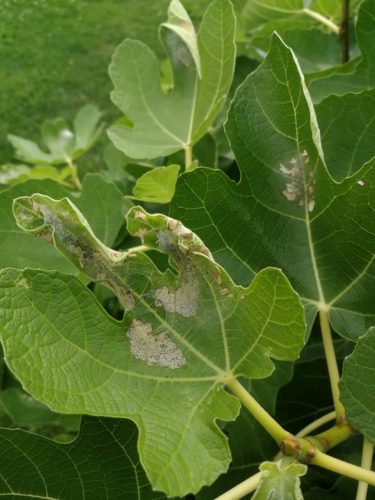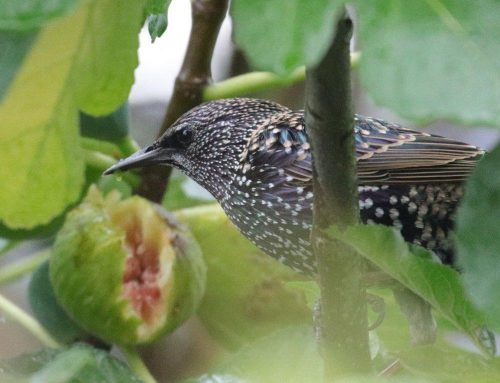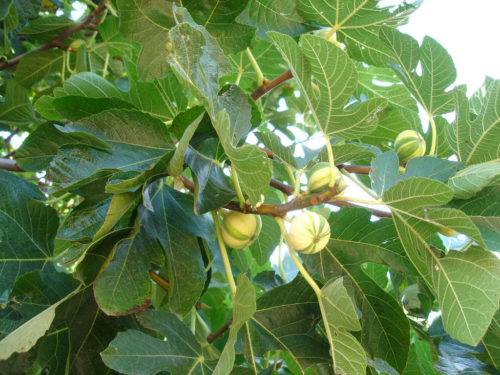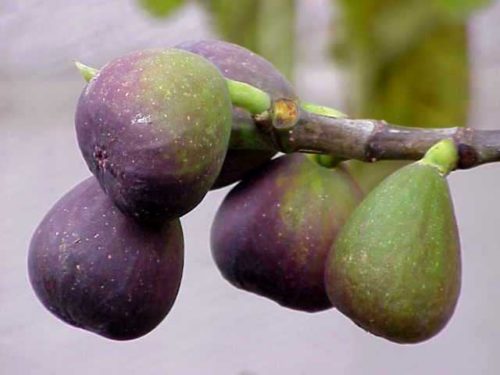The Fig belongs to the mulberry family, can reach ten meters in height and is native to western Asia.
Also known as:
Fig tree
You are viewing the mobile-adapted version of the page.
The one for tablets, laptop and desktop also provides general information, such as origin, toxicity and cultivation.
Fig – (Ficus carica), belongs to the mulberry family (Moraceae) and is native to western Asia. Figs form small trees or widely branched shrubs. Figs can grow 10 meters tall under favorable conditions.
The (wild) fig tree blooms three times a year with small flowers that resemble small, unripe figs. Inside is a space in which the female flowers are trapped. The male flowers are around the small opening in the accessory fruit. Fertilization of the female flowers is done by the fig wasp (Blastophaga psenes), which also immediately reproduces itself. The female wasp lays her eggs inside the fig, fertilizing the female flowers. These develop into the seeds in the fig. The first set of fruits starts before winter as buds. If these survive the winter (not obvious in the UK, Scotland and Ireland), they ripen in the summer. The second set arises in spring and only in long hot summers can the second set mature. The third set arises in summer and does not mature.
The ripe fruits are dark purple or black.
Because the fig wasp is not native to Britain, the figs are not fertilized, so the fruits do not ripen and fall off. Fig varieties have been developed that still form ripe fruit without fertilization. Moreover, these fruits are seedless.
The fig tree is little susceptible to fungi and diseases in the UK. In summer, regular watering prevents dehydration. In too wet a location or during a period of heavy rain, the fruits may rot.
The fig can be pruned well. The best time to prune is late November, early December or else no later than late February when the sap flow has not yet started so the fig cannot bleed to death.
Young figs should be protected during frost in the first winter after planting.
The best time for cuttings is from late February to late March before the fig sprouts. Propagation can be done by laying a branch across the ground and covering it (layering).
A good variety that produces fruit on new wood is the hardy ‘Ronde de Bordeaux’. ‘Petite Negri’ produces dark brown almost black fruits. ‘Babits’ is self-pollinating, tolerates cold well and produces reddish-brown figs. ‘Brown Turkey’ and the new variety ‘Firoma’ are also good hardy, self-pollinating varieties.
Bugs

Leaf is attacked, mesophyll eaten away: fig leaf roller (Choreutis nemorana).
Fungi & diseases
Does not apply.
Other
Lots of leaves, little fruit: over-fertilization. A fig tree needs only moderate fertilization.

Birds, often starlings, eat the ripening figs. A tight-fitting bird netting keeps birds away from the figs.


